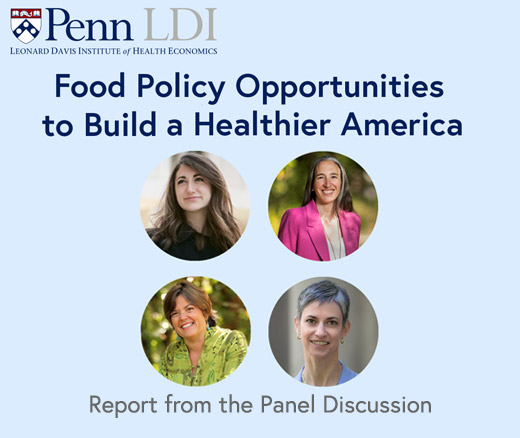Less Postacute Care for Medicare Advantage Beneficiaries Does Not Mean Worse Health
Research Brief: Shorter Stays in Skilled Nursing Facilities and Less Home Health Didn’t Lead to Worse Outcomes, Pointing to Opportunities for Traditional Medicare
Population Health
News
LDI Senior Fellow and Associate Professor of Communication at the Annenberg School for Communication Andy Tan, PhD, MPH, has been named co-lead on a $9.6 million Food and Drug Administration (FDA) Center for Tobacco Products (CTP) and National Institutes of Health (NIH) research initiative seeking to determine the most effective messaging for boosting public awareness of the continuing risks of all forms of tobacco use.

The previous research work of Tan, who is Director of the Penn Health Communications & Equity Lab, has focused on the impact of marketing, media, and public health messages on health behaviors and outcomes among diverse populations including young adults, socioeconomically disadvantaged, and lesbian, gay, bisexual, and transgender (LGBT) populations.
Tan at Penn and Meghan Moran, PhD, of the Johns Hopkins Bloomberg School of Public Health will now co-lead one of the first research projects to comprehensively evaluate the impact that government messaging about the varying levels of tobacco risks in various segments of the population. The aim is to ultimately make that messaging more effective. The research will involve cutting-edge methodologies including large-scale surveys, eye-tracking, neuroimaging, behavioral economics, and ecological momentary assessment.
However, Tan pointed out that there is a tricky balance with the project’s two goals. The first is to identify messaging that more persuasively communicates accurate information with adults who use standard smoking tobacco products so they can make informed decisions about using less harmful forms of tobacco—like e-cigarettes—if they are unable to quit.
However, the second goal is to ensure that that adult messaging does not result in the unintended consequence of making tobacco products more appealing to youth. The basis for this concern is noted in the FDA’s explanation of the Relative Risk of Tobacco Products. It points out that smoked tobacco products are the most harmful type of tobacco product and that non-combustible products—like e-cigarettes and other smokeless tobacco products—generally “have lower health risks than cigarettes and other combustible tobacco products.”
The FDA goes on to note that “the use of e-cigarettes is not risk-free. These products deliver harmful chemicals and contain nicotine, which is highly addictive. Moreover, given the harmful chemicals found in e-cigarettes, further high-quality research on both short- and long-term health outcomes is needed.”
In 1965, the year the the NationalHealth Interview Survey (NHIS) first assessed cigarette smoking, an estimated 42% of U.S. adults were current smokers. Today, about 13% of adults, or about 30 million U.S. adults, still smoke cigarettes. That number does not include the 2% of high school students and 1.1% of middle school students that the National Youth Tobacco Survey (NYTS) estimates also currently smoke cigarettes.
Overall, this smoking habit, according to the Centers for Disease Control and Prevention (CDC), remains the leading cause of preventable disease, disability, and death in the U.S.—accounting for more than 480,000 deaths per year.
Research Brief: Shorter Stays in Skilled Nursing Facilities and Less Home Health Didn’t Lead to Worse Outcomes, Pointing to Opportunities for Traditional Medicare

A New Call to Action Urges Three Ways State and Local Leaders Can Act To Ban Additives, Improve Food Labels, and Restrict Marketing to Children

New Therapies Inspire Hope, Even as Access and Treatment Risks Continue to Challenge Patients and Providers

The Wharton Professor Produces a Compendium of Economics Wisdom for Health Care Pros

Announcing Bold New Goals While Crippling the Infrastructure Needed to Achieve Them

LDI Fellows Call for Real-Time De-Escalation Teams and Safer Staffing Ratios to Prevent Chaos Before it Erupts